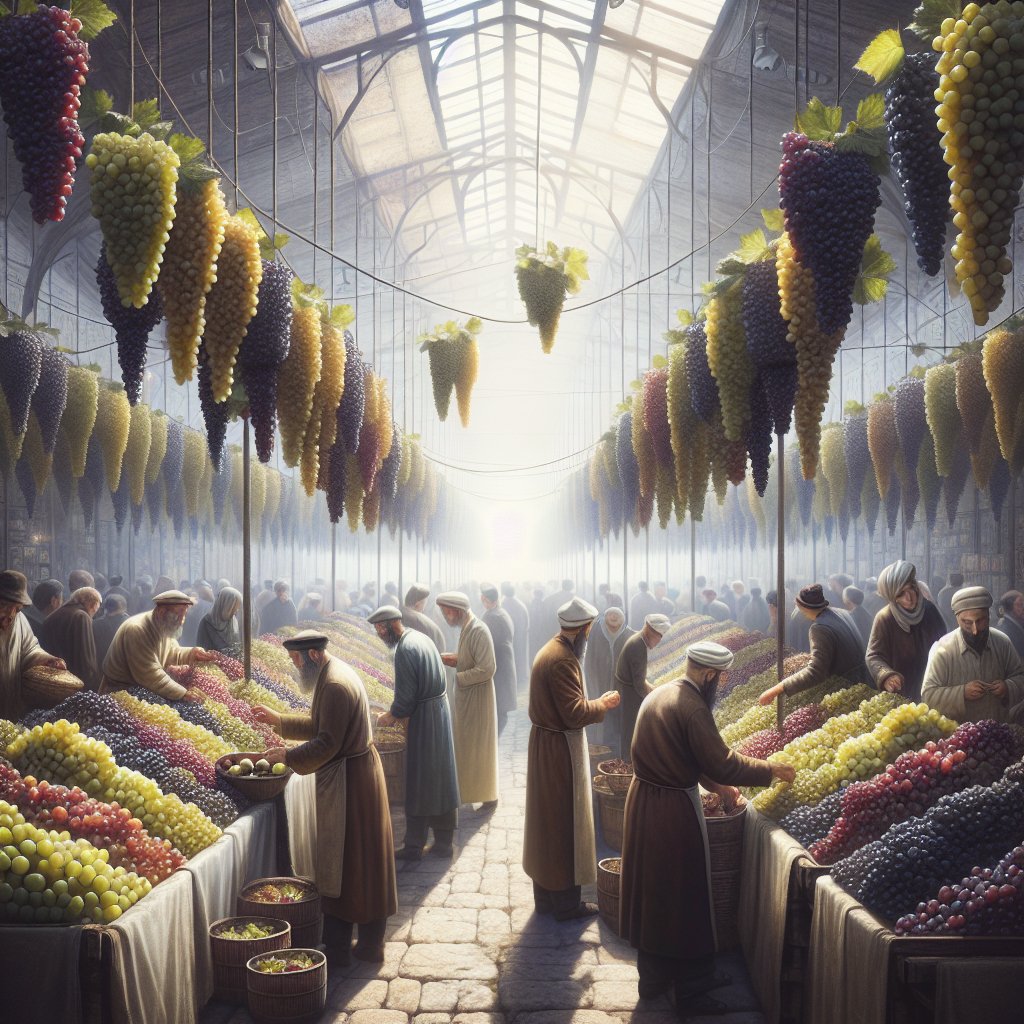The grape market has undergone significant transformations in recent years, influenced by various factors such as climate change, consumer preferences, and global trade dynamics. Understanding these changes in pricing and future forecasts is essential for producers, distributors, and consumers alike. This article delves into the current state of the grape market, examining the factors driving price fluctuations and offering insights into future trends.
Current Trends in the Grape Market
The grape market is characterized by a variety of trends that impact pricing and availability. These trends can be attributed to several key factors, including climate conditions, production methods, and consumer demand.
Climate Change and Its Impact
Climate change has emerged as a significant factor affecting grape production worldwide. Variations in temperature and precipitation patterns have led to shifts in growing seasons and grape quality. For instance, regions traditionally known for their grape production, such as California and parts of Europe, have experienced droughts and heatwaves, which can stress vines and reduce yields.
- Water Scarcity: Many grape-growing regions are facing water shortages, which can lead to reduced crop sizes and increased competition for irrigation resources.
- Temperature Fluctuations: Higher temperatures can accelerate ripening, affecting the sugar and acidity levels in grapes, which are crucial for wine production.
- Pest and Disease Pressure: Warmer climates can also lead to an increase in pests and diseases that threaten grape crops, necessitating more intensive management practices.
Shifts in Consumer Preferences
Consumer preferences have also evolved, influencing the grape market significantly. There is a growing demand for organic and sustainably produced grapes, as consumers become more health-conscious and environmentally aware.
- Organic Grapes: The market for organic grapes has expanded, with consumers willing to pay a premium for products that are grown without synthetic pesticides and fertilizers.
- Local Sourcing: There is a trend towards local sourcing, with consumers preferring grapes that are grown closer to home, which can reduce carbon footprints and support local economies.
- Health Trends: The rise in health-conscious consumers has led to increased interest in grapes as a healthy snack, further driving demand.
Price Fluctuations and Market Forecasts
Price fluctuations in the grape market are influenced by both supply and demand dynamics. Understanding these fluctuations is crucial for stakeholders in the industry.
Factors Influencing Prices
Several factors contribute to the pricing of grapes, including production costs, market demand, and global trade policies.
- Production Costs: Rising costs of labor, fertilizers, and transportation can lead to increased prices for grapes. Producers must balance these costs while remaining competitive in the market.
- Global Trade Policies: Tariffs and trade agreements can impact the import and export of grapes, affecting prices. For example, changes in trade relations between major grape-producing countries can lead to price volatility.
- Market Demand: Seasonal demand fluctuations, particularly around holidays and special events, can lead to temporary price spikes. Additionally, the popularity of wine and grape-based products can drive demand and influence pricing.
Future Market Forecasts
Looking ahead, the grape market is expected to continue evolving, with several trends likely to shape its future.
- Increased Focus on Sustainability: As consumers become more environmentally conscious, the demand for sustainably produced grapes is expected to rise, potentially leading to higher prices for organic and sustainably farmed grapes.
- Technological Advancements: Innovations in agricultural technology, such as precision farming and genetic engineering, may improve yields and reduce production costs, impacting pricing structures.
- Global Market Integration: As global trade continues to evolve, the grape market may see increased competition from emerging grape-producing countries, which could affect prices and market dynamics.
In conclusion, the grape market is a complex and dynamic sector influenced by a multitude of factors. Understanding the current trends, price fluctuations, and future forecasts is essential for all stakeholders involved in the grape industry. As the market continues to evolve, staying informed and adaptable will be key to navigating the challenges and opportunities that lie ahead.




